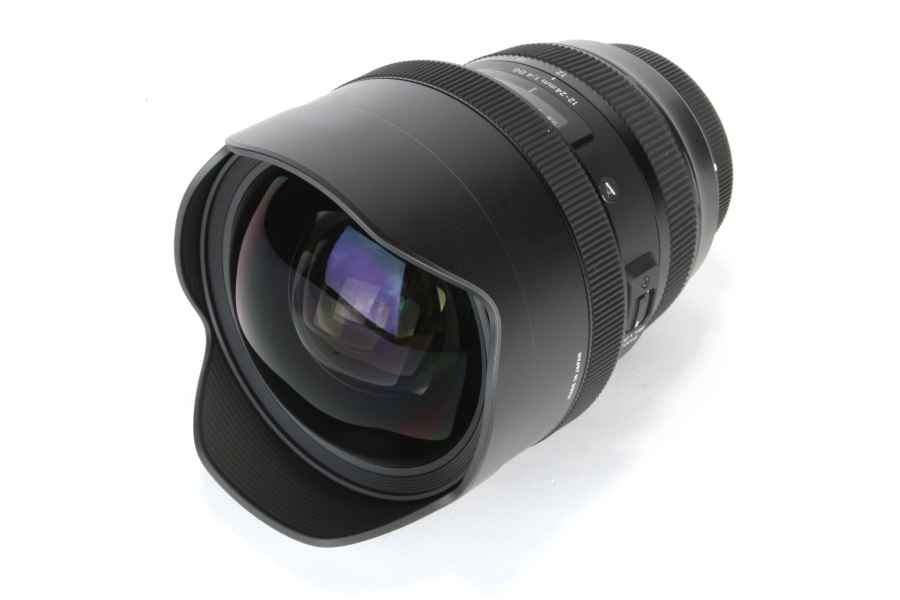Sigma 12-24mm f/4 DG HSM Art review – Introduction
During the lead-up to this year’s Photokina exhibition, it was widely reported that Sigma was about to launch a new prime lens to replace the company’s 85mm f/1.4 EX DH HSM. What was less well known is that it would be announced alongside two other lenses that the manufacturer had been keeping closely under wraps. At the same time as unveiling the all-new 85mm f/1.4 DG HSM Art lens to the world, Sigma surprised us with the 500mm f/4 DG OS HSM Sport – a high-quality telephoto prime lens that becomes the new flagship model in the manufacturer’s Sport line. Alongside this was the Sigma 12-24mm f/4 DG HSM Art – an ultra-wideangle zoom that’s been designed for today’s era of ultra-high-resolution cameras. Over the coming weeks we’ll be bringing you reviews of all three lenses, but first to arrive is the 12-24mm f/4 DG HSM Art.

The 12-24mm Art has an O ring sealing at the rear mount, making the mount dust and splash-proof. It doesn’t include sealings throughout the internal elements of the lens
Last year, we saw a surge of new wideangle lenses hit the market. One that made a lasting impression, with its phenomenal image quality, was the Canon EF 11-24mm f/4 L USM. During the official announcement of the new Sigma 12-24mm f/4 DG HSM Art at Photokina 2016, CEO of the company, Mr Kazuto Yamaki, applauded Canon and its engineers for creating one of the finest wideangle lenses ever made, before going on to explain how it has challenged other lens manufacturers to produce an optic that’s as good, if not better. In typical fashion, Sigma’s latest ultra-wideangle zoom undercuts its counterpart by quite a margin in terms of price. To give you some idea, a saving of over £1,000 can be made if you were to choose this lens ahead of the Canon EF 11-24mm f/4 L USM, but it remains £720 more expensive than the Tamron 15-30mm f/2.8 SP Di VC USD (£929). Without further ado, it’s time to find out how this lens performs, but first let’s refresh ourselves with its key features.
Sigma 12-24mm f/4 DG HSM Art review – Features
Those familiar with the history of Sigma lenses will tell you that this isn’t the company’s first attempt at creating a 12-24mm ultra-wideangle zoom. It is in fact the third lens Sigma has produced covering this focal length, and it follows on from the Sigma 12-24mm f/4.5-5.6 EX DG that was announced in 2003, and the Sigma 12-24mm f/4.5-5.6 DG II HSM that was released eight years later. This third-generation lens has the promise of being Sigma’s best ultra-wideangle to date, with an entirely new optical design that incorporates 16 elements in 11 groups.

The lens was designed with today’s era of ultra-high-resolution cameras in mind
The lens leverages Sigma’s expertise in the processing and manufacture of aspherical lenses and incorporates three aspherical lenses produced with precision glass moulding. The most impressive aspherical element is found at the front, and with a diameter of 80mm, it’s the largest such element in this class of lens. It also features elements made from ‘F’ low-dispersion (FLD) glass, which, combined with the aspherical lenses, are designed to minimise distortion, chromatic aberration, coma and flare. To prevent flare and ghosting presenting problems when users shoot towards the light, Sigma has employed its Super Multi-Layer Coatings and has also equipped it with a permanent petal-shaped lens hood at the front.

The lens features a construction of 16 glass elements in 11 lens groups
The lens features a nine-blade rounded diaphragm to ensure it provides an attractive rendition to out-of-focus backgrounds with pleasing circular bokeh in the highlights. The lens’s maximum aperture (f/4) can be used right through the focal range and can be closed down to a minimum of f/22. As we’ve got used to seeing on most current Sigma lenses, it employs the manufacturer’s Hyper Sonic Motor (HSM). As well as driving the autofocus system smoothly and quietly, it presents full-time manual focusing; allowing users to adjust the focus manually at any time without the need to flick the AF/MF switch to manual first.

The combined weight of the lens with the Canon EOS 5DS R came to just under 2kg
The minimum focusing distance of the lens is easy enough to remember – it allows you to focus within 24cm of a subject at the 24mm end of the zoom range. It has a maximum magnification ratio of 1:4.9 and is compatible with Sigma’s USB docking device that can be used to update firmware and refine the focus settings of the lens manually using the manufacturer’s Optimization Pro software.

The lens is stubbier than many of its rivals, including the Tamron 15-30mm f/2.8 SP Di VC USD
The sheer mass of the lens implies it’s going to be best paired with full-frame DSLRs that feature the largest and most comfortable handgrips. However, there’s nothing to say it can’t be used with an APS-C DSLR, with which it’s also compatible. Attach it to an APS-C DSLR with a 1.5x crop factor and it’s equivalent to an 18-36mm lens, whereas on Canon APS-C DSLRs it has an equivalent focal length of 19-38mm. As with all lenses released by Sigma in recent times it’s available in three mounts and caters for Canon, Nikon and Sigma users.

At the time of testing no filter adapters were available for the lens. We’ve since discovered that Lee Filters will be producing an adapter for the SW150 system in early 2017
As part of the boxed contents, there’s a rear cap and a sizeable front plastic cap that has a slim, felt-like lining on the inside. Unlike many other lens manufacturers, Sigma continues to supply its lenses with a padded case – something I’ve always found a rather nice touch and an extra precautionary measure that could prevent it getting knocked or damaged in transit.
Sigma 12-24mm f/4 DG HSM Art review – Build and handling
Slip off the lens cap that’s a good, tight fit, and you’re greeted by a monstrous aspherical glass element. Its bulbous shape isn’t too dissimilar to Canon’s EF 11-24mm f/4L USM lens and just like its peer, it features a fixed petal-shaped hood that shields the front element from glare and lens flare. This also doubles up as a way of protecting the large and expensive element from any scuffs that could be caused by knocking into something when the lens cap isn’t attached.

The bulbous front element is protected my a fixed lens hood
There’s no getting away from the fact that what we’re looking at is a fairly big and heavy lens, though it’s actually slightly shorter in length than the Canon EF 11-24mm f/4L USM, Tamron 15-30mm f/2.8 SP Di VC USD and Nikon 14-24mm f2.8 G AF-S ED. By combining such large glass elements in as many as 11 groups, you get the sense that Sigma has focused all its efforts on image quality and has prioritised this ahead of practical convenience. The first time you pick it up, you quickly realise just how heavy it is. Weighing 1,150g, it definitely lets you know when you’ve packed it as part of your kit, and it works out at 50g heavier than the mighty Tamron 15-30mm f/2.8 SP Di VC USD.

In this view you can clearly see how the barrel tapers out towards the front of the lens
From the rear of the lens looking forward, you’ll notice how the barrel tapers out slightly before you reach the zoom ring. Although it’s not the largest zoom ring we’ve come across in terms of how far it extends down the barrel, it’s easily located from behind the camera. It’s consistently smooth across the focal range, but does require a bit more force to shift the heavy internal optics than you might be used to. Best of all, you can get from 12mm to 24mm and vice versa very quickly with less than quarter turn. Beyond the zoom ring you’ll notice the lens is embellished with the letter A in a silver circle, indicating that it’s part of Sigma’s Art series. To one side of this you have the AF/MF switch that juts out slightly from the side of the barrel and right on top you’ll find the focus distance window that displays its information in feet and metres. The AF/MF switch offers a satisfying click when it’s used and the white background that’s revealed behind the switch when it’s set to AF acts as a visual reference of where it’s set to in low light.

The lens is embellished with the letter A in a silver circle, indicating that it’s part of Sigma’s Art series
Just ahead of the focus distance window there’s a steep step up to the focus ring, which is considerably larger in diameter than the zoom ring. This differentiates the feel of the both the zoom ring and focus ring from behind the camera and means you’re never in doubt of what you’re adjusting. The smoothness of the focus ring can’t be faulted and it offers just the right level of fluidity.
Sigma 12-24mm f/4 DG HSM Art review – Image quality
What with our review sample of the lens arriving in Canon-fit and being designed for today’s era of ultra-high-resolution cameras, it seemed sensible to pair it up with one of Canon’s 50-million-pixel DSLRs – the EOS 5DS R. Eager to first find out just how well the lens performs with regard to controlling curvilinear distortion, I headed out to take a series of real-world sample images throughout the focal range before examining these alongside the images of our distortion chart that were taken in the lab.

The vignetting the lens produces at f/4 (taken at 12mm) is clear to see in this image of an underpass
Creating such an ultra-wideangle lens with zero distortion was always going to be a big ask, and although there’s virtually no distortion between the focal lengths of 18mm and 24mm, you can still expect to see barrel distortion in shots taken at the widest end of the zoom. That being said, the severity of barrel distortion at 12mm isn’t as severe as you might expect and shouldn’t be difficult to correct using an Adobe lens profile as soon as one becomes available for Lightroom CC, Photoshop CC and Camera Raw. All being well, we’ll see the lens supported, along with the Sigma 500mm f/4 DG OS HSM and 85mm f/1.4 DG HSM Art in Adobe’s next Creative Cloud update.

The wide focal length will appeal to landscape, architectural and interior photographers
Analysing our Applied Imaging tests at each aperture setting revealed that the lens resolves an exceptional level of sharpness. Our results tell us the lens is at its sharpest in the centre at the widest end of the focal length, with corner sharpness at 12mm peaking at f/8. Zooming in to 18mm also sees the corner sharpness peak at f/8, with the centre sharpness at this focal length measuring slightly below the figure we recorded at 12mm at f/4.

The lens controls curvilinear distortion extremely well from 18-24mm, but barrel distortion is evident when it’s used at wider focal lengths
Inspecting our results at the long end of the zoom tells us the centre sharpness isn’t quite as impressive as it is at the wide end when it’s used wide open (f/4), but sharpness does improve by closing the lens down to f/5.6. The best sharpness at the edge of the frame at 24mm is recorded between f/8 and f/11. Overall, the sweet spot between centre and corner sharpness is found between f/5.6 and f/8. The lens continues to resolve sharp results beyond these settings up to f/11, but diffraction does start to play a role in softening images as you close down to f/16 and f/22.
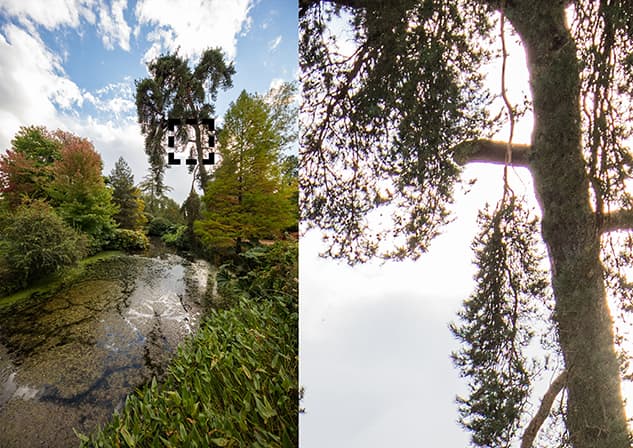
Chromatic aberration was observed along some high contrast edges as can be seen in this magnified view (right)
Examining the edges, where chromatic aberrations can often be discovered, revealed that the lens does an admirable job of keeping fringing in check. It was only in the very brightest areas of a few of my test shots, where branches were backlit by the sun, that I noticed some purple fringes of colour. Vignetting is apparent in images shot at the widest end of the zoom at f/4, but clears up as you close down to f/5.6 and beyond. The same is said of the long end of the zoom where corners appear approximately 1.2EV darker than the centre at f/4.
Sigma 12-24mm f/4 DG HSM Art review – Resolution, shading and curvilinear distortion
Resolution

Our Applied Imaging tests indicate that the lens is at its sharpest in the centre towards the widest end of the focal length. It’s exceptionally sharp when it’s used wide open (f/4) at 12mm and the chart tells us the centre improves at 24mm when the aperture is closed down towards f/5.6. Users will find they’ll record the finest edge-to-edge sharpness across the frame between f/5.6-f/8, which is standard for a full-frame lens. Great results can be achieved by closing the lens down to f/11, although you’ll notice that diffraction does play its part in softening images as you close down to f/16 and f/22.
Shading
Shoot at the widest end of the zoom (12mm) with an aperture of f/4 and your images will feature vignetting. However, it’s not as severe as you might expect in a lens so wide. Corner shading quickly disappears at 12mm as you start to close the lens down to f/5.6. Edges are approximately 1.2EV darker than the centre at 24mm, but again this corner shading improves by stopping down to f/5.6. It can’t be traced at all at f/8 or beyond.

12mm @ f/4
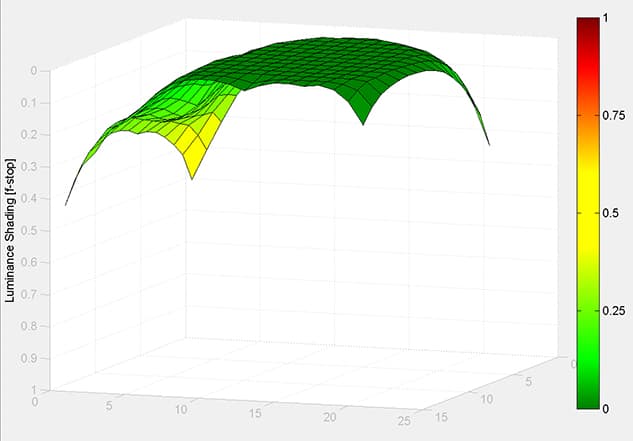
12mm @ f/5.6

12mm @ f/8

18mm @ f/4
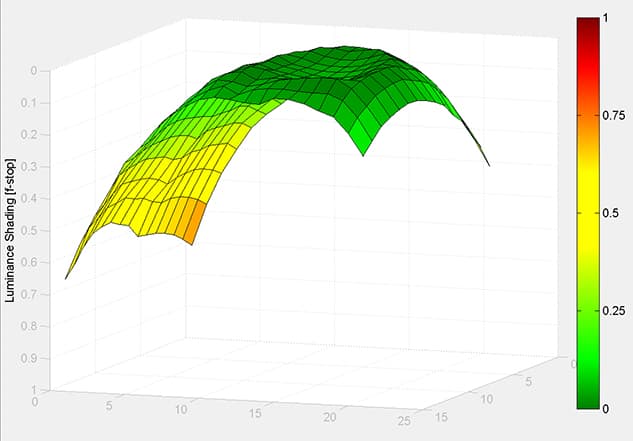
18mm @ f/5.6
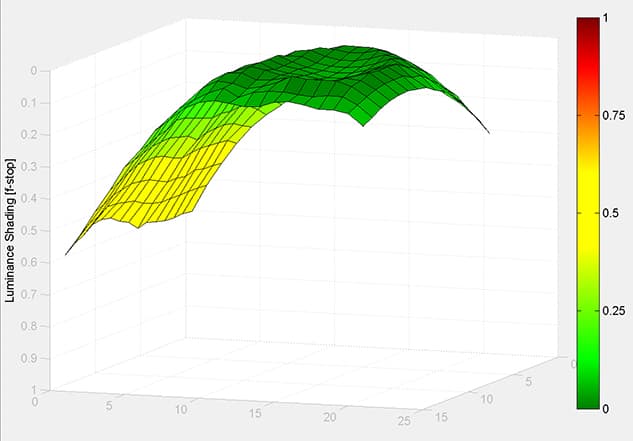
18mm @ f/8
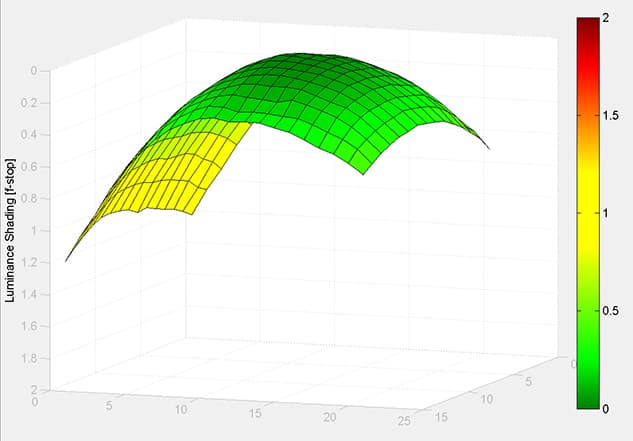
24mm @ f/4
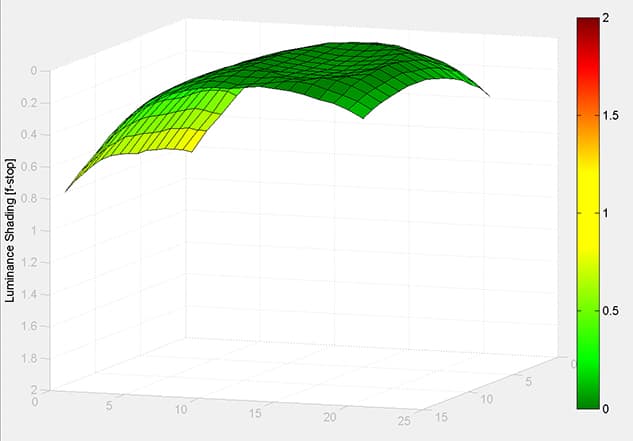
24mm f/5.6
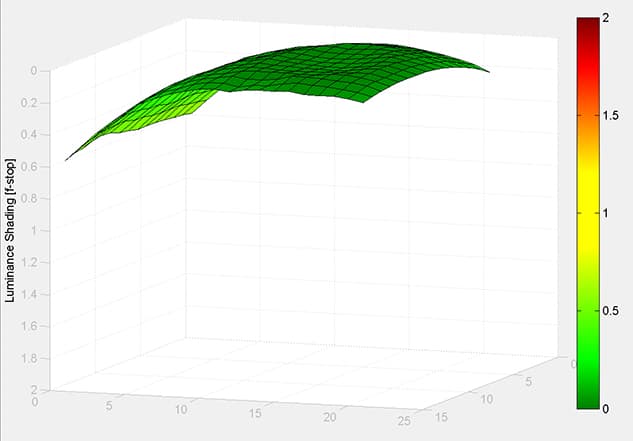
24mm f/8
Curvilinear distortion
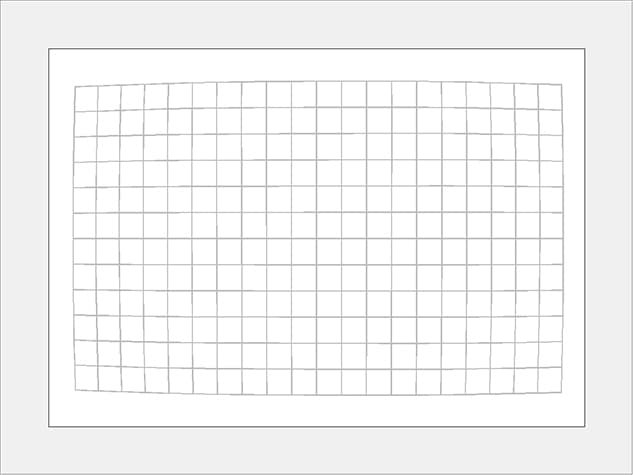
12mm SMIA TV = -2.6%

18mm SMIA TV = 0.6%

24mm SMIA TV = 0.9%
Subjecting the lens to our distortion chart shows that straight lines bow outward from the centre of the image at 12mm. This barrel distortion isn’t as severe as some ultra-wideangle lenses and you’ll notice it becomes less recognisable when you zoom in slightly. At 18mm, there’s no trace of distortion whatsoever and there’s only a faint sign of pincushion distortion when you push to 24mm. Considering just how wide the lens is, this is a very impressive curvilinear distortion performance.
Sigma 12-24mm f/4 DG HSM Art review – Verdict
We’d expect a first-class finish and solid build quality from this latest member of the Sigma Art series. The good news is, this is exactly what you get. It’s a lens that has created a bit of a buzz among landscape, architectural and interior photographers, and all for good reason. Yes, it’s heavy and may not hold the title of being the world’s widest rectilinear zoom lens like the Canon EF 11-24mm f/4 L USM, but it does have many of the features of its closest rival, for a lot less money.

There are faster wideangle zooms available should you demand a faster maximum aperture, but if you’d like the option of squeezing just that little bit more in the frame than the Nikon 14-24mm f/2.8 G AF-S ED or Tamron 15-30mm f/2.8 SP Di VC USD allow you to do, the Sigma 12-24mm f/4 DG HSM Art takes a lot of beating. At the time of testing, there was the small issue of not being able to attach filters and we were waiting to see whether the key players in the filter market would release adapters for this lens. Then, just as this issue went to press, we received confirmation from Lee Filters that it intends to make an SW150 adaptor for the lens, which we’re told should hopefully arrive in early 2017.

DSLR users who’ve been calling out for an affordable full-frame wideangle zoom that’s capable of delivering exceptional results on the highest resolution cameras have finally got what they’ve been asking for. It’s yet another superb addition to Sigma’s ‘Art’ line-up of premium lenses, and they just seem to continue to keep on coming.

